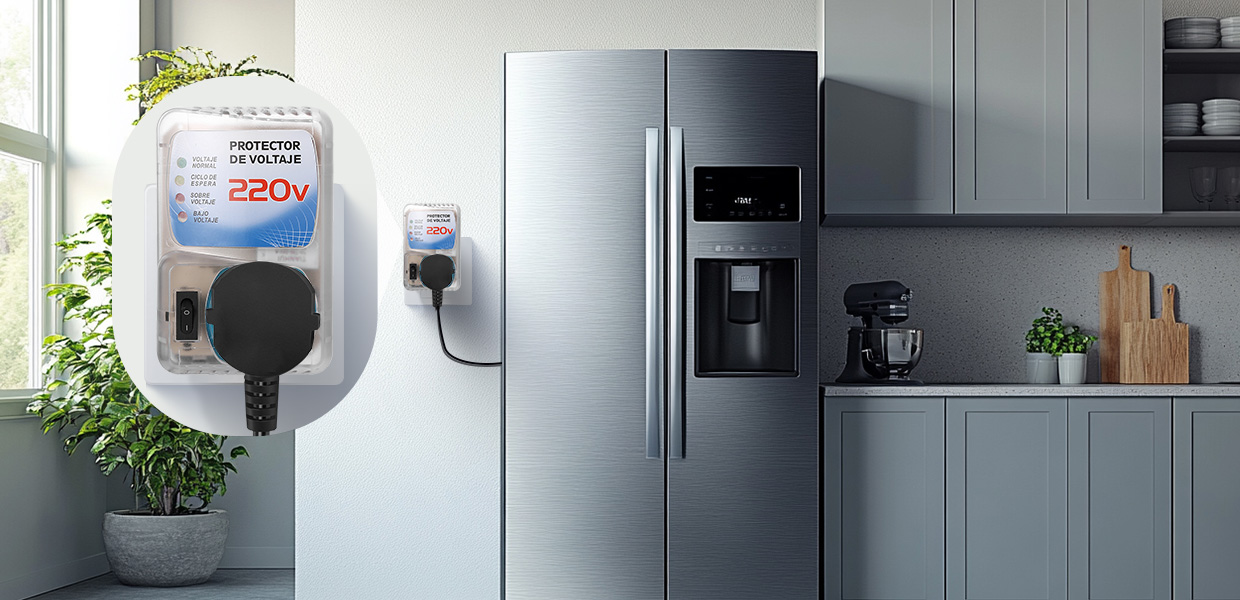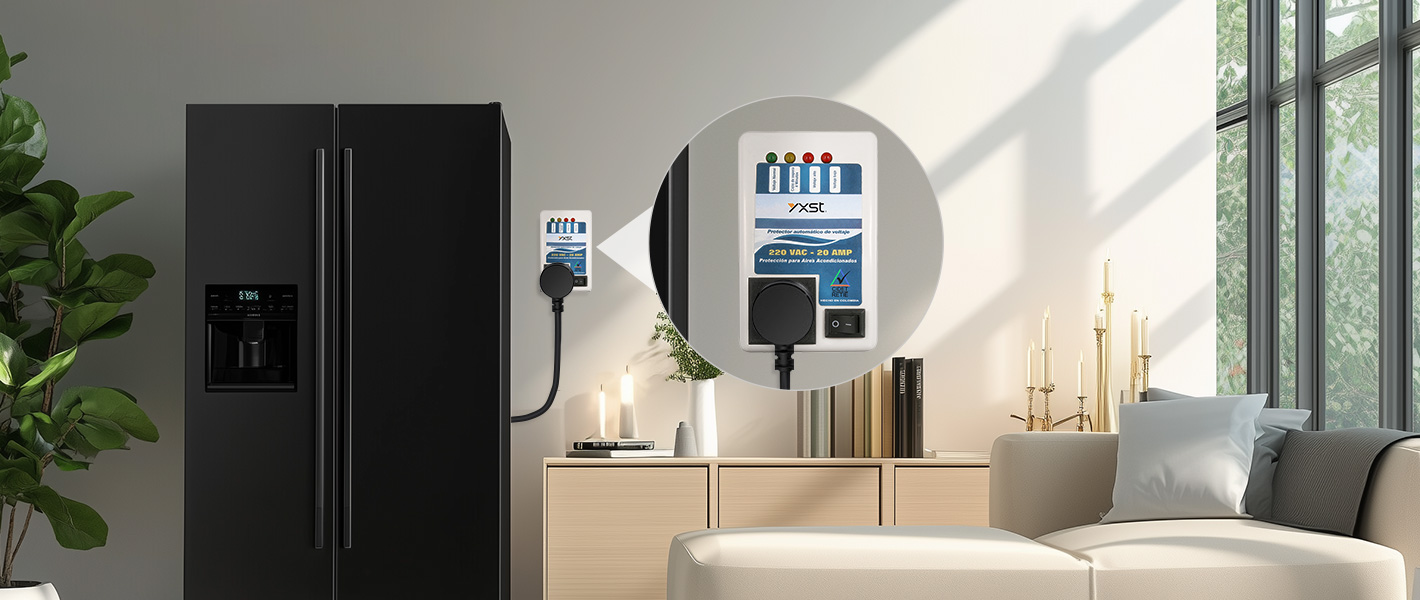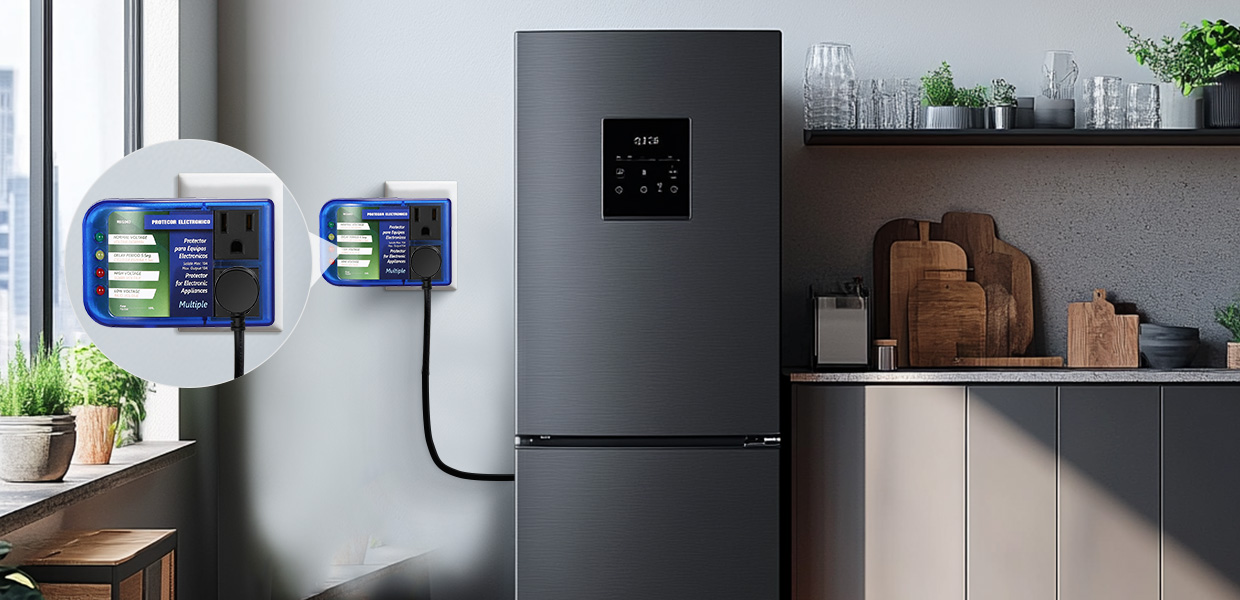Refrigerator Voltage Protector: Guide to Safe Appliance
Date:2025-04-30 Click:1039
Understanding Refrigerator Voltage Requirements
Basic Voltage Specifications
Refrigerators typically operate on standard household voltage, which ranges between 110V and 240V AC, depending on regional electrical standards. Most modern refrigerators are designed to tolerate minor fluctuations, but sustained deviations beyond ±10% can damage internal components like compressors or control boards. For example, a refrigerator rated for 120V may malfunction if voltage drops below 108V or exceeds 132V.
Why Voltage Stability Matters
Voltage instability—whether from brownouts (undervoltage) or surges (overvoltage)—can disrupt the compressor’s operation. The compressor relies on consistent current to maintain cooling cycles; irregular voltage may force it to overwork, leading to premature failure. In extreme cases, unstable voltage can corrupt electronic control panels, resulting in costly repairs.
Do You Need a Surge Protector for Your Refrigerator?
Manufacturer Recommendations vs. Real-World Needs
Manufacturers often advise against using surge protectors for refrigerators, citing risks of delayed restart after power interruptions. For instance, GE warns that surge protectors might override the compressor’s built-in safety mechanisms, potentially causing food spoilage if the appliance fails to resume operation. However, this advice primarily applies to low-quality protectors without delayed restart or voltage stabilization features.
In areas prone to frequent power fluctuations (e.g., regions with unstable grids or frequent lightning), a specialized refrigerator voltage protector becomes critical. These devices not only block surges but also monitor voltage levels, shutting off power during dangerous fluctuations and allowing safe restart once conditions stabilize.
Key Scenarios for Using a Protector
1. High-Risk Environments: Locations with frequent thunderstorms or unreliable power infrastructure.
2. Older Homes: Aging wiring systems may struggle to maintain stable voltage.
3. High-Value Appliances: Protecting premium refrigerators with advanced electronics justifies investment in robust surge protection.
Best Surge Protector for Refrigerator and Freezer: Key Features
Joule Capacity and Voltage Clamping
A protector’s joule rating indicates its energy absorption capacity. For refrigerators, aim for at least 140–2000 joules, depending on risk levels:
- 140–500 joules: Suitable for areas with minor, infrequent surges.
- 1000–2000+ joules: Recommended for regions with severe grid instability or lightning activity.
High-quality protectors also feature low residual voltage to ensure surges are diverted before reaching sensitive components.
Dual Outlet and Smart Monitoring
A double-outlet design allows simultaneous protection for a refrigerator and freezer, streamlining installation. Look for models with:
- LED status indicators: Real-time feedback on voltage conditions.
- Automatic delay restart: delay prevents compressor stress after power restoration.
Overload Protector Integration
Refrigerators have built-in overload protectors that disconnect the compressor during current spikes or overheating. External voltage protectors complement this system by addressing external voltage irregularities, creating a layered defense.
Choosing the Right Refrigerator Guard
Compatibility and Certification
Ensure the protector matches your refrigerator’s voltage and wattage. Certified models guarantee compliance with safety standards.
Durability and Maintenance
Opt for flame-retardant housings (PC or ABS materials) and replace protectors every 2–5 years, as their components degrade over time.
Conclusion
Refrigerator voltage protector is a prudent investment for safeguarding against voltage irregularities. By combining high joule ratings, dual outlets, and smart monitoring, these devices extend appliance lifespan and reduce repair costs. Always prioritize models with delayed restart and certification to ensure compatibility and reliability.
For detailed product comparisons or installation guidance, refer to manufacturer guidelines or consult a licensed electrician.
You may enjoy these related articles:
Device To Protect Against Power Surges: Automatic Refrigerator Voltage ProtectorFunction, principle, use of refrigerator voltage protector




